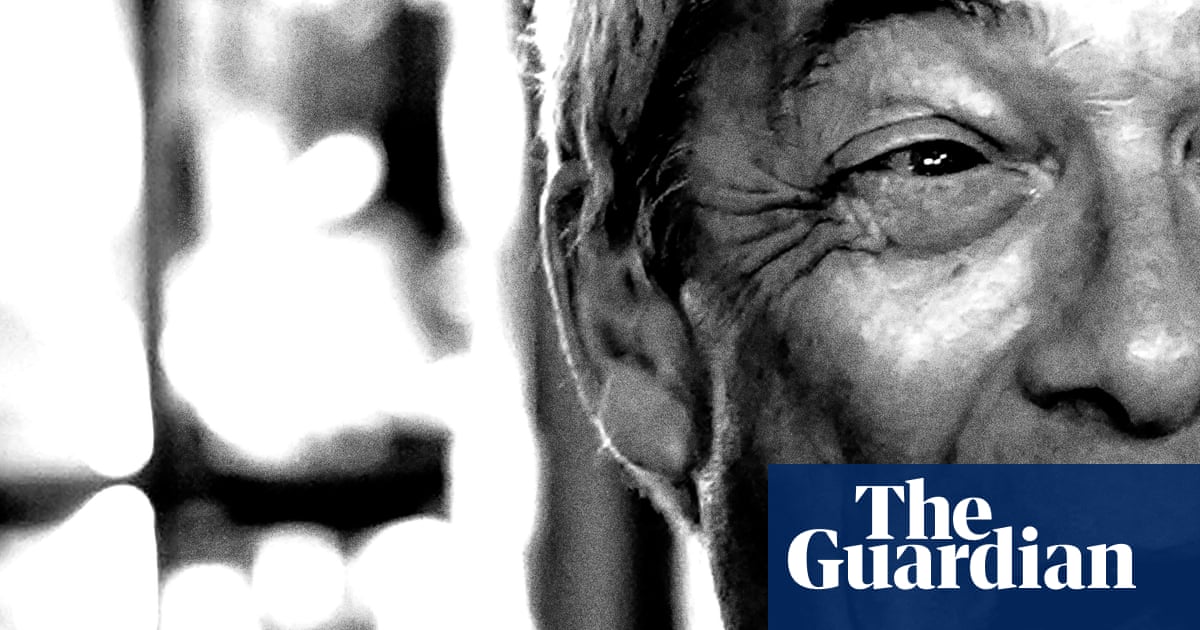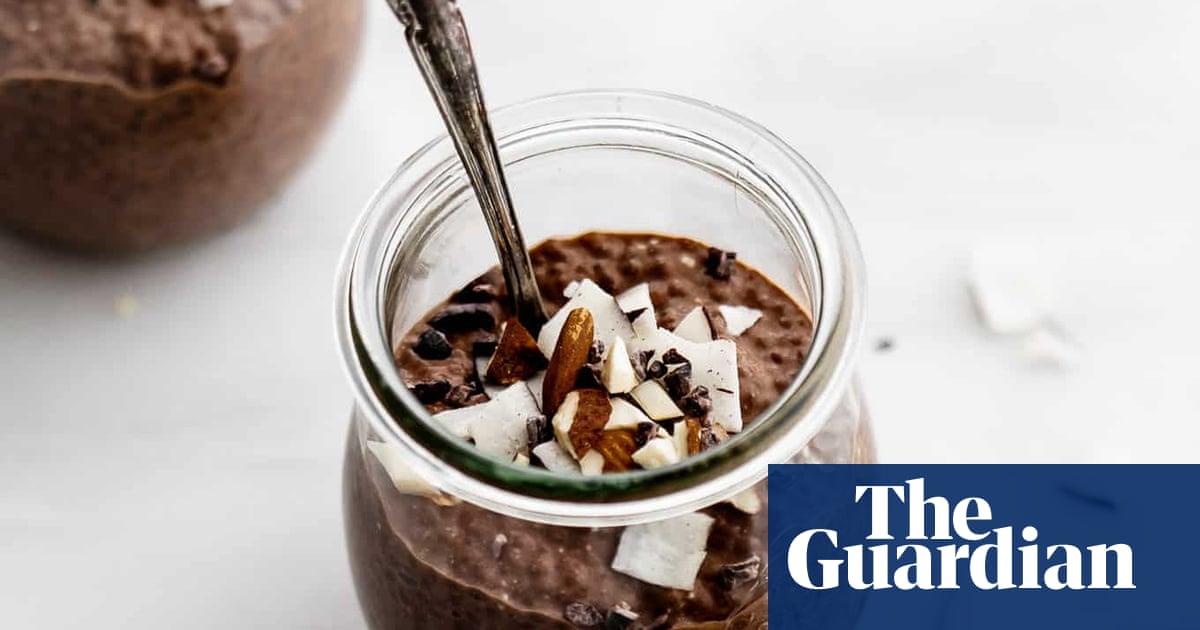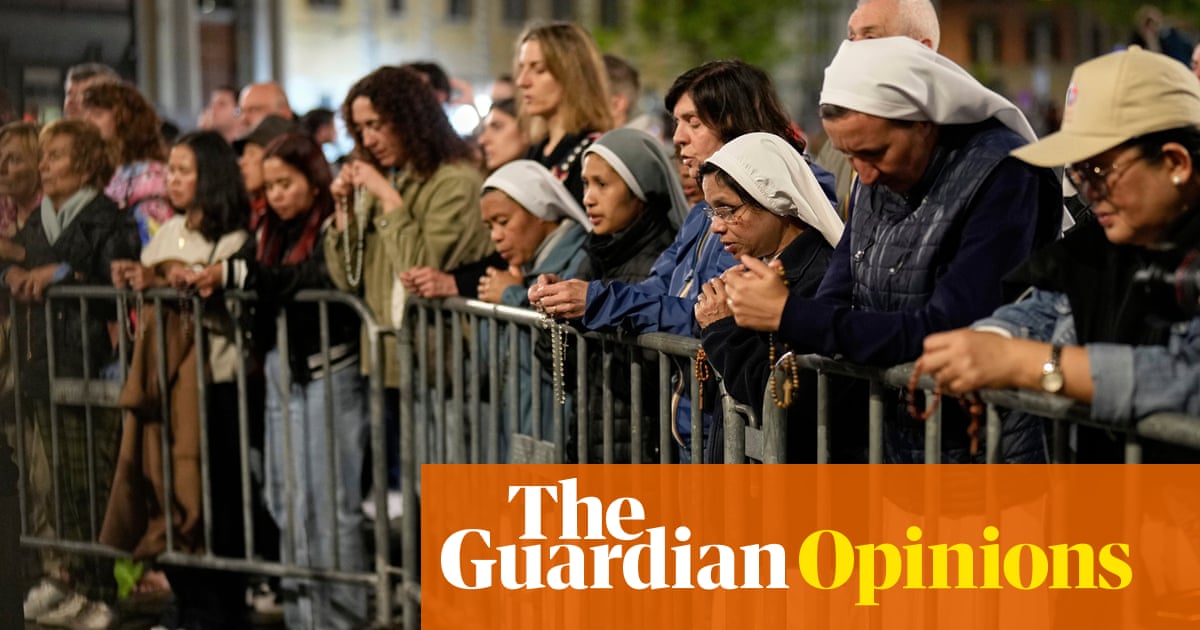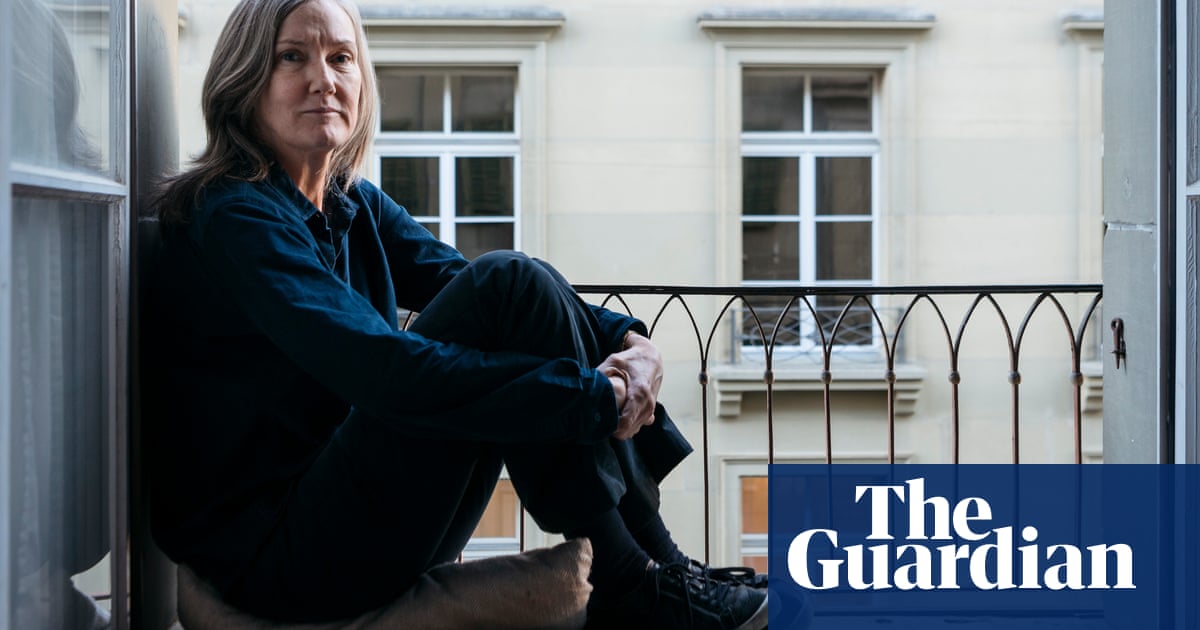It’s been a decade since Tina Knowles started dictating her life story into her phone for her grandchildren and future great-grandchildren. She wanted them to know their history – her early life and world were so different from theirs, she might as well have been from another planet. Knowles, the youngest of seven, born to a docker and seamstress, grew up poor in segregated Texas. Her grandchildren, born to Knowles’s superstar daughters, Beyoncé and Solange, are growing up in Los Angeles and New York with unimaginable wealth, but under unimaginable scrutiny.
A couple of years ago, Knowles started writing a book that was supposed to be her behind-the-scenes take on the outfits she had created for her daughters’ music careers – the dazzling triple-denim looks she had cobbled together from fabric remnants and army-surplus stores, with almost no budget, for Beyoncé’s group Destiny’s Child in the 1990s. She was still improvising costumes once Beyoncé had gone solo and could have her pick of designer clothes; even the singer’s spectacular recent Renaissance tour had input from her mother.


But those stories from Knowles’s early life – the ones she was dictating for her grandkids – kept bubbling up, and she became more comfortable, she says, with the idea of sharing them. “Because, you know, my family’s very private,” she says; Beyoncé, notoriously so. Knowles dug out that old phone with the recordings and started listening. Eventually, she decided: “I can still be respectful and not tell their story, but tell my story.” The result is her memoir Matriarch, a brilliant account of how a resilient little girl, born in terrible times, became a powerhouse, guiding her daughters to their potential without, it seems, all of them losing their sanity.
Knowles is sitting in the back of a car, speaking on Zoom, looking phenomenally glamorous – red lips, cascading hair – having just come from a photoshoot. But I suspect Knowles always looks like this. (She has even taken to borrowing Beyoncé’s glittering stage costumes for red-carpet events.)
Now a multimillionaire businesswoman, Knowles raised arguably pop music’s greatest of all time. Beyoncé has won 35 Grammys, sold more than 200m records, performed at the Super Bowl, sung at inaugurations, and worked with everyone from Nile Rodgers to Chimamanda Ngozi Adichie. Her mother’s life is now one of award ceremonies, beautiful houses, yachts, private jets, and business meetings for the hair and fashion lines they share. But Knowles has realised, she says, that a lot of the time, particularly with Destiny’s Child, the group she helped shepherd with her now ex-husband Mathew Knowles, her input was minimised, even criticised. “I didn’t take credit for things; I stayed in the background. Now I’m 71 and I want to be bold.” She laughs. “I don’t have those hang-ups any more, I’m just living out loud.”

Knowles, who is known by fans as Mama Tina or Ms Tina, is a great talker – warm and funny, with her charming Texas accent. She is acutely aware of her children’s privacy, but can’t help addressing some of the media stories about them. When Beyoncé was pregnant with her first daughter, Blue, in 2011 (she also has seven-year-old twins, Rumi and Sir), the strange theory that she was faking it, complete with false baby bump, enraged her mother. “It was one of the worst times of my life, because I couldn’t say anything,” says Knowles. “But, you know, we deal with rumours all the time. So at some point you just roll with the punches and say …” She pauses. “When they start messing with your kids, your kids signed up for this. But when they start messing with your grandkids, that’s when it gets really bad.”
Knowles will sometimes address these things on social media. “I get in trouble with my kids all the time for speaking out. They’re like, don’t dignify that with an answer. And most of the time I’m able not to do that, but sometimes my little fingers just …” She flickers perfectly painted nails in the air as if she’s about to type. Mostly, though, she says, “it’s so silly, and the stupidity and the ignorance that people put out there, some of it is just funny. That’s what my kids say all the time. They’re like, some of this stuff is a joke, so why are you letting it make you mad?”
There are topics, however, that she is tight-lipped about. There is no mention in the book of the 2014 incident in a lift after the Met Gala, where leaked CCTV footage showed Knowles’s younger daughter, Solange, attacking Beyoncé’s husband, the rapper Jay-Z, nor of his supposed infidelity. (The statement released after the lift footage emerged said they had apologised to each other and “moved forward as a united family”.) She also skirts over the breakup of the original Destiny’s Child in 2000 and the time Beyoncé removed her father as their manager in 2011.


As matriarch of one of the most scrutinised celebrity families – as well as Beyoncé and Solange, Knowles also considers her niece Angie, and Kelly Rowland, the Destiny’s Child singer and actor whom she helped to bring up, as daughters – what does a family get-together look like? Who does the cooking? “I do a lot of cooking, but, thank God, I don’t have to do all of it any more,” she says. “We’re together most holidays, we vacation together a lot. We make sure that we stay close.”
Do people often arrive by helicopter? I’m thinking of her description in the book of Beyoncé’s 40th birthday party in Italy, arranged as a surprise by Jay-Z, which Solange initially couldn’t make, only to arrive by helicopter the day afterwards. “No, that’s not normal!” says Knowles with a laugh. “But when we’re together, it’s very normal. It’s like any other family. We’ve got our shoes off and we’re relaxed and we’re talking and we’re having a good time with each other. Kids are running around.”
When Knowles started writing, she thought she would finish the book in triumph – fabulous in her 70s, surrounded by family and grandchildren, her daughters on top of the world. Instead, it ends with a shock diagnosis of breast cancer.
Last summer, Knowles had been at Beyoncé’s house in the Hamptons, playing in the pool with her granddaughter Rumi. She writes movingly of feeling a stillness in the air, “the singular awareness of being watched with love”. Knowles turned, half-expecting, she writes, to see her late mother standing there, but it was Beyoncé. It felt like four female generations all there together.
The next day, Knowles went back to LA to have biopsies of a mass in each breast, which had been picked up in a mammogram three months earlier. She had had unusual mammograms before, which turned out to be nothing, and if the doctors weren’t hassling her to make an appointment, she thought, it couldn’t be anything to worry about. One lump was found to be benign, the other was cancer. It was caught early and removed, and she was reassured that the prognosis was good, but, she says, “it was like a punch in the face”.

She had no intention of sharing the news publicly, she says. “I was, like, absolutely not, that’s nobody’s business but mine.” But she wanted to encourage other women to check, and to keep on top of their screening tests. Knowles thought she had had a mammogram in 2022, but because of the pandemic it was postponed and then forgotten. The cancer could have been diagnosed at an even earlier stage, she says. “That is my big reason for talking about it, because I want women to take the time and not put themselves last.”
When she arrived at her room at the hospital, Solange, Beyoncé and Kelly were there. They prayed together and sang. Solange cheered Knowles up with memes, laughing together at the TikToker Jools Lebron’s viral “very demure, very mindful” video. A month later, Knowles had more surgery to remove a blood clot, and later got an infection; Beyoncé would insist on being on speakerphone to ask Knowles’s doctors questions. She moved into Beyoncé’s house, and an old friend came to help care for her. “It was really hard, really challenging,” says Knowles. “Something that I thought was going to be easy turned into something pretty traumatic, but I am doing so good now, and I am just so grateful and blessed that I am healthy. It could have been way worse.”
What pulled her through? “Absolutely my faith, and my kids. My kids were …” Knowles pauses. “I can’t even explain how supportive they were.” Her voice cracks and she holds back tears. “This was a seven-day-a-week thing, and I felt, with them by my side, I could get through anything – and I did.” Did it affect her confidence? No, she says with a smile. “My confidence is better, actually. I decided that my silver lining of all of this would be a breast reduction, and, let me tell you, I wore a dress to the Billboard awards that I could never have dreamed of wearing before.” She laughs. “So that part, for me, has been awesome.”
Neither has it brought fresh perspectives on life – those came a decade earlier, she says, when she turned 60. “I had the view that I would live each day as fully as I possibly can, and just live out loud, which doesn’t mean I’m loud or boisterous or anything. It just means that I am a priority, and I don’t feel bad about the good things that I’ve accomplished. I feel proud, I feel happy, I feel fulfilled.”
She might have a new outlook, but has not forgotten her female ancestors. Rosalie, enslaved in Louisiana in the early 1800s, managed to hold on to her daughter Célestine when the white family who had enslaved them downsized. Célestine became pregnant by the slaver’s grandson; later, he would buy Célestine and their two children at a public auction. “I type those words, say them aloud,” writes Knowles, “and I feel that fear and rage in my blood, the trauma passed down through my DNA.” Living with the man’s white wife and children, Célestine would go on to have 10 more children by him – one of them, Odilia, Knowles’s grandmother.
Knowles’s mother, Agnes – whose stories instilled a firm sense of Black pride and female strength – named her Célestine (Tina for short), after Knowles’s great-grandmother. Tina’s maiden name, Beyoncé, was a misspelling of the family’s surname – all her siblings had variations. When Agnes had asked for it to be corrected, she was told to be grateful that they had birth certificates at all. Tina named Beyoncé to honour her own name and her history.
Knowles’s family lived in the island city Galveston, just off the Texas coast. She remembers the rocky bit of the beach that Galveston’s Black population was allowed to use, the areas in the backs of restaurants where they could order food, which they would have to eat outside. Having to stand at the back in buses.

It was worse in Louisiana, where her parents were from. When Knowles was there visiting relatives in 1959, her cousins told her they had to wait outside a shop until the white children inside had finished. “I was really confused,” says Knowles. “It was very shocking to me.” And then there was her cousins’ reaction: “They were just OK with it, and they thought I was a troublemaker.” She pauses. “As an adult, I totally get it, because if I had pushed it, that could have been a very bad outcome.” Only four years earlier, 14-year-old Emmett Till, visiting relatives in Mississippi, was abducted and murdered after being accused of offending a white woman in a grocery store. “My mom would prep us for Louisiana,” says Knowles. “She was always saying, ‘You can’t do what you do at home, it’s a different place.’ I had the message, but I didn’t fully understand it until [the shop incident] happened.”
For Agnes, drilling those rules into her children, however painful, was a matter of survival. One night, Knowles’s 17-year-old brother was arrested after falling asleep outside somebody’s house. Knowles, then in her early teens, remembers their mother praying, convinced the police were going to kill her son. “We were so afraid that we’d lost my brother,” she says. When he was released the following day, he had been beaten up so badly that his ribs were broken.
From then on, the police would harass her family. Her father would be constantly stopped in his car. Waiting for her brother to pick her up outside the cinema, Knowles was questioned by police and taken to the police station when she refused to give her name. There were other traumatising, dehumanising incidents. Once she was violently ill, and her father took her to hospital. She was given an invasive vaginal examination, without explanation or consent, that left her bleeding. The doctors, seeing a Black teenage girl, assumed she was pregnant or had a sexually transmitted disease. They missed that she had viral hepatitis.
“I had a lot of anger,” remembers Knowles. “I was just mad when I was a teenager, but didn’t really connect the dots about why I was so angry. It was tough years.” She wasn’t rebellious in terms of drugs and boys, she says, “but I was rebellious in my mouth. I was rebellious in being angry at my parents, and it wasn’t even their fault, but I was just mad.” Had she told her children about these experiences, or did they come as a surprise when they read her book? “I told my children. They know all of these things.”
One of her early nicknames was Badass Tenie B, perfect for that spirited little girl. “That was not a term of endearment,” she points out. “It was like, that’s a bad little kid. She’s wild, talking back, she’s doing all these things.” Does she still feel like Badass Tenie B sometimes? Knowles smiles. “Now I can revel in it, I can enjoy it, and I can pull her out when I need to protect myself or my children, because I pulled her out all the time for my kids. Badass Tenie B would come out because that’s my protector.”
By the time Beyoncé was born, in 1981, Tina was married to Mathew Knowles, then a successful sales executive, and living in Houston. It’s fun to read about Beyoncé as a challenging baby, whose two-hourly night wakings would only be soothed by jazz. Knowles also writes about Beyoncé’s shyness as a child; it’s hard to believe that now she performs to millions. What caused the transformation? “Performing changed her life. Even when she was shy, she was dancing and putting on shows, and she would just come alive at that time, which is why we got her in the dance class. When she was dancing, there was no shyness.” She pauses. “I don’t know if shy is the right word, but she is still reserved. She always has been and always will be. She’s not that person that walks into the room, like, ‘I’m here!’ I don’t think that changed. I just think that she has this other personality when she gets on stage.”
Solange, born five years later, was always more outgoing, says Knowles, and a creative spirit. Later, she would become known for her performance art and groundbreaking album A Seat at the Table, which includes spoken-word interludes from her parents among its songs of Black womanhood. Knowles writes about not wanting Solange to be overshadowed by her older sister before she had a chance to develop her own talent.
Did she worry about sibling rivalry? “I don’t know if I worried about it, but everybody who has kids that are five years apart, there is a time where they’re super close, and then when the older kid gets to be around seven or eight, that little kid is going to get on their nerves. I started seeing signs that Beyoncé was getting irritated with her, and didn’t want her around as much. I started seeing them being mean to each other, and that was scary for me, so I got them in therapy. It didn’t take long, because the therapist showed Beyoncé how that could be so damaging to her sister, and she loved her sister, so she became way kinder and more protective of her.”

Was it a problem later, as Beyoncé’s megastardom eclipsed the careers of both Kelly Rowland and Solange? “No, I never worried about the competition or sibling rivalry with them as adults,” says Knowles. “They are so close, and they love and support each other, all three of them in every way. People try to make up that story, but it doesn’t fit, because they’re so different, and there is no rivalry between them.” How much of that came from Knowles? She writes that she made a point of never comparing them, always celebrating their differences. Did that help? “Absolutely, and I also taught my girls that other girls are not your competition. You are your own competition. Go and work harder so that you can top your own self. Don’t focus on them, because the time that you’re spending focusing on what they’re doing, you could be working on yourself and becoming better. They learned that very early. I think that philosophy had a lot to do with who they are now.”
In the early days of Destiny’s Child, and its predecessor group Girls Tyme, Knowles worried the girls were driving themselves too hard. “It was their choice – they lived and breathed music and what they were doing, and I would have to make them go and do stuff.” She would force Beyoncé and Kelly to go to high-school parties, she says, to give them a sense of normal 16-year-old life. “They would rather stay home and listen to music and rehearse, and I just didn’t feel like it was as balanced as it should be.” Meanwhile, Mathew created a “boot camp”, as Knowles describes it in the book, taking the girls running and getting them to sing the whole time to increase their lung capacity so they could perform challenging choreography on stage.
Knowles had endured some tough years. She writes about being hit by a tax bill and the family going bankrupt. She had forgiven Mathew’s infidelities over the years, but eventually she left and moved with the girls into a small flat. She had set up a hairdressing salon, which was doing well, but it was a stressful time. “Your kids have to be your priority. I believe that with all my heart, but I do think that if I had to do it all over again, I would have balanced a little more in terms of myself. It was tough. I just didn’t have the time to focus on the pain of whatever else was going on in my life.”
For years, even after she left, Knowles’s marriage would be on and off. Several months after she filed for divorce in 2009, she started secretly seeing Mathew again: the couple took romantic cruises on their boat for several nights at a time before ending up at their Galveston beach house. If one of the girls called, worried their mother was lonely, their father would have to be quiet. There was one extraordinary incident when they rang to surprise Knowles on Mother’s Day, announcing they were on their way. It meant their father had to flee before they got there. The “affair” only ended when he confessed what reporters already knew – that he had recently fathered a child with someone else. Knowles would later get married again, to the actor Richard Lawson in 2015, but she divorced him nine years later when she was 70.
If there’s one thing that’s clear from Matriarch, it’s that Knowles feels things deeply – whether that’s love for the people in her life or the rights of wider communities around her. Her Instagram page is often political – recently, it included admiring posts about Senator Cory Booker’s 25-hour evisceration of President Trump. She is a friend of Michelle Obama and she, Beyoncé and Kelly appeared at a rally for Democrat presidential nominee Kamala Harris. (Although, when I ask about the current situation in the US, she says: “I’m not going to talk about politics.”) She has also long been a supporter of LGBTQ+ movements and lost her nephew Johnny to the HIV/Aids epidemic. They were a similar age and had been inseparable childhood friends who both loved fashion and dreamed of getting out of Galveston. They lived together as adults, and he had helped Knowles’s family, running the household and designing clothes for the girls. (Years later, Beyoncé dedicated her Renaissance album to the cousin she called “uncle”, who introduced her to the house music and disco made by queer people of colour that inspired the album.)

By the late 90s, the HIV/Aids epidemic had killed many people within the gay community. “Johnny lost all his friends, and I was always fearful of it,” says Knowles. Then Johnny became ill. “We tried to protect him as much as we could, and tried to educate ourselves so that we weren’t condoning the ignorance that was going on at the time.” It was shocking to visit him at the hospice, where so many other young men had been disowned by their families. “I just find it really hard to believe that people could abandon their kid, no matter what they’re going through,” says Knowles. Johnny died in 1998 at the age of 48.
Around the time of Johnny’s death, Destiny’s Child had a record deal and were starting to get big. Knowles had to fight for the girls, particularly their look, which she took charge of. They were sent drab clothes, and designers wouldn’t dress them. She writes: “The reality was that many did not want to give their clothes to these curvy Black girls.” Instead, Knowles came up with her own creations. So many are enduring: the camouflage looks for Survivor, or the strappy and cut-out leather-look creations for Bills Bills Bills. Some people at the label didn’t appreciate her input (one of Knowles’s arch chapter titles about this is “Tina is the problem”). The colours she chose, Knowles writes, were “too bold, too bright, too Black for them”.
Sometimes, says Knowles with a smile, “I’ll look at some of the clothes and I’m like, ‘Oh lord, what were we thinking?’” But mostly their look worked and the group and their fans loved them. “I think the label just didn’t have this open mind to things – it had to be proven to them. And, in all honesty, we were country, we were from Texas. We had big hair, I love sparkle and it wasn’t what was happening at that time – we were going against the grain. But these were four Black girls from the south, and we worshipped Motown, so we wanted something different. They were unique.”
Many parents, especially in the entertainment industry, who have been involved with their children’s careers end up falling out (Beyoncé’s relationship with her father hasn’t seemed so straightforward). Why hasn’t Knowles, who still works with Beyoncé three decades on? “I’m very close to my kids,” says Knowles, “and I also know when enough is enough, like, sometimes they don’t want my input, and I know how to keep my mouth closed and mind my own business. I also realised that my kids are adults. You’ve got to let your kids grow up.”

The book gives a mother’s-eye view of Solange’s artistic development, Kelly steadily forging her own path, and Beyoncé’s work ethic and steely determination. Knowles was there when Beyoncé, watching Whitney Houston sing the national anthem at the Super Bowl, declared that one day she would do the same (in 2004, she succeeded). And in the meeting at the record label where her daughter was told her first solo album, Dangerously in Love, didn’t have any potential hits, but refused to back down (it spent eight weeks at No 1).
I ask her what she thinks are the most valuable lessons she has taught her daughters, and what she has learned from them. “They’ve taught me some great stuff. Beyoncé has taught me how to take a compliment, Solange has told taught me to be bolder, Kelly has taught me patience, and Angie has just taught me to laugh at stuff and not take it so seriously.”
As for what she has left them, it’s “family first. Also what my mom taught me, which I think is the message they are passing on to their children – my mom would say, pretty is as pretty does. My mom would always say to me, ‘You’re a pretty girl, but one day you’re not going to be so cute, and what people are going to remember is how you acted and how you treated them.’”
There is something moving about the wisdom passed through her family’s female line, and something energising about Knowles’s power seeming to grow as she gets older. Finally, she says, she has reached an age where she is content to be single. “I think, up until 70, I really felt like no matter how great my life was, I need to have a partner to make it whole. I don’t feel that way any more.” There is too much to do, even if Knowles seems to have unlimited energy. “You know, 71 is harder than 70, and 70 is harder than 69, but, I tell you, I’m going to try to keep my young spirit.” She smiles, dazzling. “The phrase ‘I can’t’ – I try not to use that too much.”

.png) 6 hours ago
7
6 hours ago
7













































